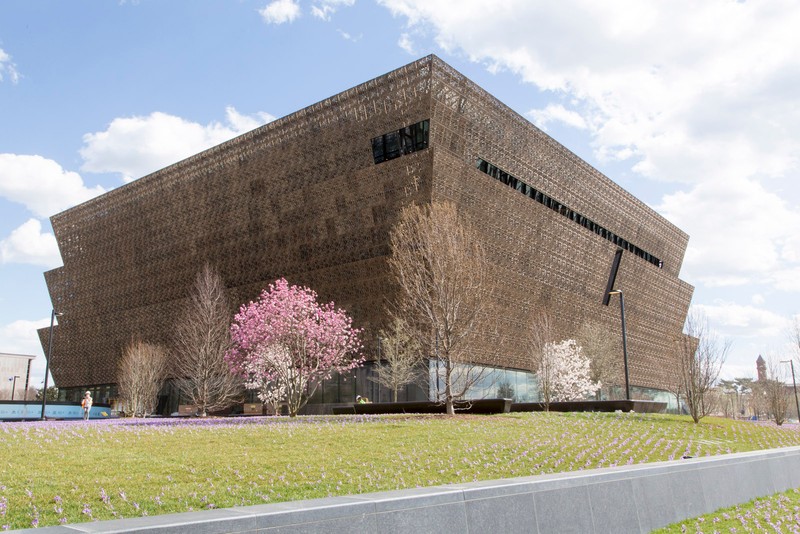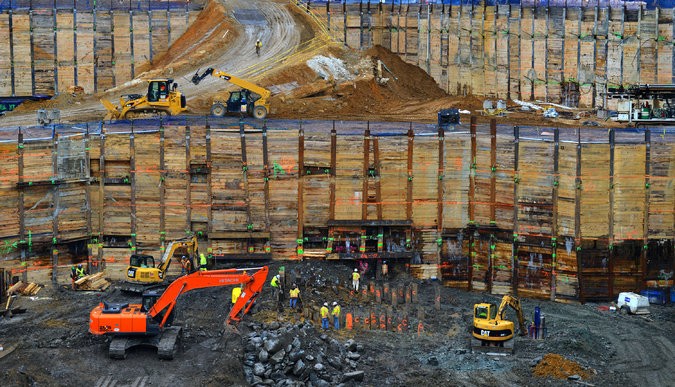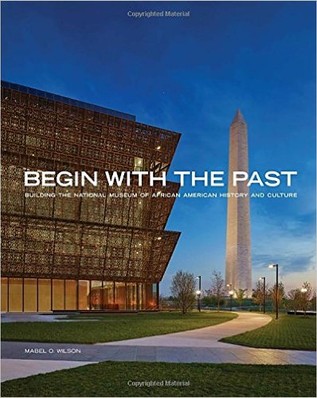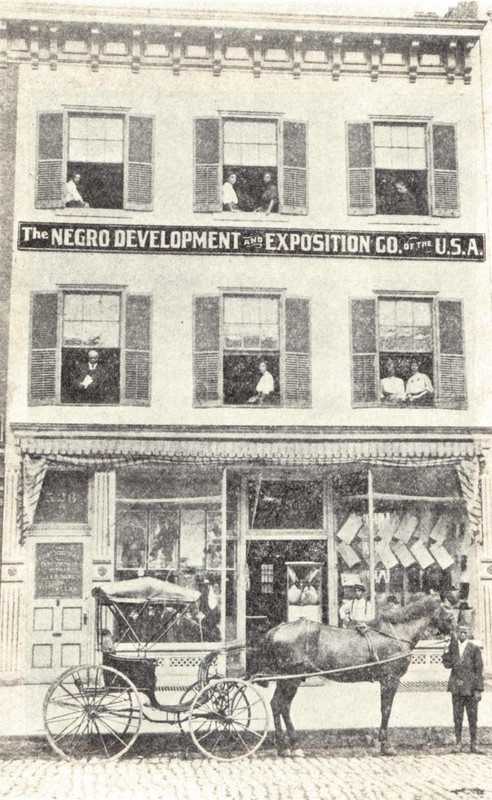Smithsonian National Museum of African American History & Culture
Introduction
Text-to-speech Audio
The National Museum of African American History & Culture was authorized by Congress and President George W. Bush in 2003. After 13 years of planning and construction, the museum opened on September 24th, 2016. The museum holds over 40,000 artifacts within its vaults, most of which were donated by institutions and individuals. Several thousand of artifacts are included in the museum's twelve galleries. The museum's three-tiered form is meant to symbolize hands held in prayer and was modeled from the shape of a traditional Yoruban crown.
As of November, 2016, this museum uses a timed pass system to accommodate large crowds.
Images
The National Museum of African American History & Culture was completed at a cost of over $500 million.

Construction of the museum in 2013. Credit Linda Davidson/The Washington Post, via Getty Images

To learn more about the history of the museum, consider this book from professor Mabel Wilson and published by Smithsonian Press.

African Americans created dozens of exhibitions dedicated to preserving Black history and culture during the late 19th and early 20th century. This exhibit was part of the 1907 Jamestown Exposition.

Backstory and Context
Text-to-speech Audio
In 1915, Black veterans of World War I launched a movement to create a national museum dedicated to African American veterans. In 1916, African American attorney Ferdinand Desoto Lee challenged Black leaders to create a “permanent memorial to colored soldiers and sailors.” Missouri Republican Congressman Leonidas Dyer, the same Congressman who advocated on behalf of an anti-lynching bill, introduced legislation the same year that Lee chartered the National Memorial Association. Echoing the call of Lee's organization, Dyer's legislation called for the creation of a commission to create "a monument or memorial" for Black soldiers and sailors.
In 1919, Dyer called for the creation of a national monument for Black veterans to be built on the National Mall. In 1920, Lee's National Memorial Association expanded their plans to include both a monument and a building with exhibits dedicated to African American achievements. Ten years later, Congress passed legislation allowing for the creation of a monument to Black soldiers. However, Congress failed to allocate funds for the project.Franklin Deleano Roosevelt places the creation of the monument towards the bottom of the administration's goals in 1933, the same year that Ferdinand Lee passed away.
Similar measures failed throughout the next six decades, including a 1965 bill calling for the creation of a "Negro History Museum. Similar to previous efforts, Congress failed to act on this bill and efforts throughout the 1960s and 1970s receive little more than verbal support. Even in the immediate wake of Martin Luther King Jr.'s assassination, a bill to explore the creation of a national repository of Black history failed to receive support. Congressman John Lewis, a veteran of the Civil Rights Movement, likewise tried and failed to secure passage of a bill to create a National African American History Museum in the 1990s.
Although a bipartisan commission working between 2002 and 2003 secured the passage of a law authorizing the creation of a public commission to create a Black history museum with the Smithsonian, it appeared that the National Museum of African American History and Culture Act would meet a similar fate. As funding efforts stalled, a group of private foundations and African American athletes and celebrities took action, raising $240 million to support the museum. The federal government matched private fundraising efforts, allowing for the construction and operation of the museum. On September 24, 2016, the first African American president dedicated the new museum.
The museum's galleries are arranged chronologically, beginning with the gallery entitled "From Slavery to Emancipation." Visitors travel seventy feet below ground to start their historical journey in this gallery, which begins with life in Africa and the slave trade. After visitors pass through exhibits that relate slavery throughout the Americas and the British colonies, they see how slavery was woven into the the political and economic fabric of the nation, including the Constitution itself. Later exhibits show how people of African descent confronted slavery, culminating with exhibits about the African American experience in the Civil War.
The second series of galleries are dedicated to the topic "From Segregation to Today." These exhibits reveal the complexities of Reconstruction and the emergence of Jim Crow. Emotional highlights of these galleries include the original coffin that held the body of 14-year old Emmett Till, "white only" signs, and portions of ropes and other tools of racial violence that were used to maim and kill African Americans during first half and mid-20th century.
The upper galleries include special rotating exhibits that demonstrate the resiliency of African American communities and and highlight Black culture and achievement.
In 1919, Dyer called for the creation of a national monument for Black veterans to be built on the National Mall. In 1920, Lee's National Memorial Association expanded their plans to include both a monument and a building with exhibits dedicated to African American achievements. Ten years later, Congress passed legislation allowing for the creation of a monument to Black soldiers. However, Congress failed to allocate funds for the project.Franklin Deleano Roosevelt places the creation of the monument towards the bottom of the administration's goals in 1933, the same year that Ferdinand Lee passed away.
Similar measures failed throughout the next six decades, including a 1965 bill calling for the creation of a "Negro History Museum. Similar to previous efforts, Congress failed to act on this bill and efforts throughout the 1960s and 1970s receive little more than verbal support. Even in the immediate wake of Martin Luther King Jr.'s assassination, a bill to explore the creation of a national repository of Black history failed to receive support. Congressman John Lewis, a veteran of the Civil Rights Movement, likewise tried and failed to secure passage of a bill to create a National African American History Museum in the 1990s.
Although a bipartisan commission working between 2002 and 2003 secured the passage of a law authorizing the creation of a public commission to create a Black history museum with the Smithsonian, it appeared that the National Museum of African American History and Culture Act would meet a similar fate. As funding efforts stalled, a group of private foundations and African American athletes and celebrities took action, raising $240 million to support the museum. The federal government matched private fundraising efforts, allowing for the construction and operation of the museum. On September 24, 2016, the first African American president dedicated the new museum.
The museum's galleries are arranged chronologically, beginning with the gallery entitled "From Slavery to Emancipation." Visitors travel seventy feet below ground to start their historical journey in this gallery, which begins with life in Africa and the slave trade. After visitors pass through exhibits that relate slavery throughout the Americas and the British colonies, they see how slavery was woven into the the political and economic fabric of the nation, including the Constitution itself. Later exhibits show how people of African descent confronted slavery, culminating with exhibits about the African American experience in the Civil War.
The second series of galleries are dedicated to the topic "From Segregation to Today." These exhibits reveal the complexities of Reconstruction and the emergence of Jim Crow. Emotional highlights of these galleries include the original coffin that held the body of 14-year old Emmett Till, "white only" signs, and portions of ropes and other tools of racial violence that were used to maim and kill African Americans during first half and mid-20th century.
The upper galleries include special rotating exhibits that demonstrate the resiliency of African American communities and and highlight Black culture and achievement.
Sources
Cowley, Graham. "How the Fight for a National African-American Museum Was Won." New York Times, September 04, 2016.
Brown, Tanya Ballard. "100 Years In The Making, Black History And Culture Museum Gets Ready For Reveal." NPR Special Series. September 14, 2016.
Eric Hintz, "An Early Attempt to Build a “National Museum for Colored People,” Smithsonian Magazine September 15, 2016. http://invention.si.edu/early-attempt-build-national-museum-colored-people
Wilkins, Robert L.. The Long Hard Road to Truth: The 100-Year Mission to Create the Museum of African American History and Culture. Atlas Books, 2016.
Brian de Ruiter, “James Ter-centennial Exposition of 1907,” Encyclopedia Virginia, October 27, 2015, accessed November 13, 2016, http://www.encyclopediaVirginia.org/Jamestown_Ter-Centennial_Exposition_of_1907
